Speaker
Description
Quantum control is based on applying unitary transformations to various quantum systems in order to drive the population evolution into a target state. In a multilevel system with intrinsic interactions between the atomic/molecular levels (specifically spin-orbit interaction), the laser excitation may play a different indirect role. Namely, in the presence of strong electromagnetic fields, the energy levels in atoms/molecules experience shifts in their positions due to the so called Autler-Townes effect [1].
Thus, the control of the spin-orbit interaction can be realized by using resonant or nonresonant laser fields with various parameters as an external control mechanism [2,3].
By extending the scheme presented in [3] we explored the Autler-Townes control of spin-orbit coupling in an original four-level system aiming at large transfer efficiency to a final triplet state [4]. Our findings confirm the interesting features of probe-coupling excitation laser scheme, assisted by the intermediate spin-orbit coupling. The quantum control is based on the energy separation between the singlet and triplet states, modified by the Autler-Townes effect. The detuning and intensity of the control laser are proven to be key parameters of the control protocol.
This work is further developed into a theoretical description of an all-optical spin switch within the “Q-DYNAMO: Quantum Dynamic Control of Atomic, Molecular and Optical Processes” project.
Acknowledgements: T. K and S. W. acknowledge funding by Q-DYNAMO “Quantum Dynamic Control of Atomic, Molecular and Optical Process” (EU HORIZON-MSCA-2022-SE-01, Project No. 101131418).
References
[1] S.H. Autler and C.H. Townes, Phys. Rev. 100, 703 (1955)
[2] T. Kirova and F.C. Spano, Phys. Rev. A 71, 063816 (2005)
[3]E. H. Ahmed, S. Ingram, T. Kirova, O. Salihoglu, J. Huennekens, J. Qi, Y. Guan, and A. M.Lyyra, Phys. Rev. Lett. 107, 163601 (2011)
[4] M. Delvecchio, T. Kirova, E. Arimondo, D. Ciampini, and S. Wimberger, Phys. Rev. A, 106, 052802 (2022)

